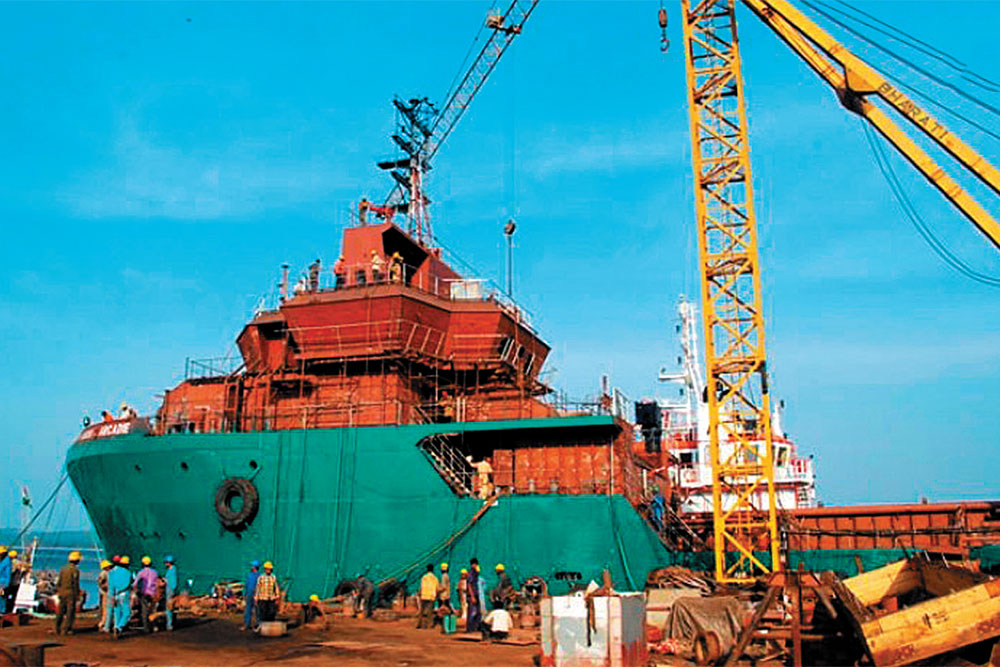Given their capital constraints, smaller ARCs are content taking bets on micro, small and medium enterprises (MSMEs). The time taken for recovery is also lesser compared to that in bigger ticket loans. For Reliance ARC, while the focus is more towards retail (60% of AUM) and SME (15%), its MSME exposure includes an auto component manufacturer, a steel player, a railway contractor and a liquor distributor. “A Kolhapur-based auto ancillary’s export orders were cancelled after 2008. His factory was shut, so we did some restructuring and re-oriented his business towards the domestic market. Then, there was a railway contractor who was stuck in some projects, so we helped him complete the projects,” says Asokan Arumugam, CEO, Reliance ARC, which is majority-owned by Reliance Capital.
Arumugam cites another MSME example, ‘There was an iron rod manufacturer who decided to put up a plant in Hospet (Karnataka) for sourcing iron ore and manufacturing rods and that is when iron ore mining was banned. We have restructured his loans by giving him some discount and he has sold some non-core and personal assets and infused money into the business.” While Reliance ARC currently does not have any large sector exposure, Arumugam says that they did look at a large power asset last year but the transaction did not fructify. “We managed to structure the transaction, but the pricing didn’t work. We thought the pricing should have been lower, but the bank didn’t think so. Once we raise capital, we would be open to sectors like power where we can use our group’s expertise in the sector,” he says.
Surprisingly, Edelweiss ARC’s Antony is not so sanguine about the viability of distressed power projects. “We have not acquired much in the power sector. Power assets are coming to the market, but unfortunately the tariff is not picking up. Yes, fuel-linkage will come with Coal India’s production going up but the issue is the tariff level. What distribution companies are offering is much below the viability rate.” Citing an example of a power asset that Edelweiss ARC did due diligence on, Antony says: “The initial capital cost was Rs.5 crore per mw and reached Rs.10 crore per mw owing to interest incurred during construction. Our reading was that the unit is viable at around Rs.5-5.5 per unit, whereas PPAs offered are in the range of Rs.3.5-4 per unit. The 540 MW project started with debt of Rs.2,000 crore – Rs. 2,500 crore, now the debt is Rs.4,000 crore. The project can only sustain debt of Rs.1,500 crore – Rs.2,000 crore.”
Hope capital
However, with foreign capital coming into the distressed market ARCs may be willing to take more risks and bid for bigger assets. The new capital flows will also address the shortage of working capital funding that ARCs face when restructuring distressed assets. “For any business to run, it requires working capital. It is hard to obtain working capital for a distressed asset and even when it is made available, the cost is very high. Therefore, genuine restructuring so far has been few and far between,” adds Ganatra.

Foreign capital is coming in amid the hope that the implementation of the Insolvency and Bankruptcy Code (IBC) will lead to faster resolution and recovery. In India, recovery has been a slow and painful process. As per the World Bank, the resolution time in India extends beyond four years (See: Timeless classic) and going by a Crisil estimate, for ARCs, the recovery rate has been 36% and the average resolution time taken for ARCs has been about five years.
ARCs, too, are excited by the prospect of quick liquidation post implementation of the new law. The IBC stipulates that a company has a moratorium of 180 to 270 days once the turnaround plan is implemented. If there is no visible improvement within that time frame then creditors can press for liquidation. But will execution be as smooth as it is expected to be? The duration of 270 days that a turnaround plan has to show results seems like a tightrope walk as it is hostage to business conditions prevailing then. The downside to that is bad asset resolution could degenerate into an asset flipping game.
According to a report by Religare Institutional Research, “While the proposed bankruptcy law is a positive step, timely implementation remains much in doubt. The set-up of national company law tribunals (NCLT) across India, training of judges and provision of infrastructure will take time, apart from the execution risk that typically plagues judicial matters in India. Writ-petitions and deferment of legal proceedings cannot be ruled out.” As per Ganatra, there are over about 103,000 cases pending in 33 DRTs under Recovery of Debts Due to Banks and Financial Institutions Act, 1993 (RDDBFI) and SARFAESI Acts involving outstanding debt of about Rs.400,000 crore. Needless to say, the National Company Law Tribunal will have to beef up its infrastructure to expedite all the hearings that come up before it. IBC will be put to the test as Edelweiss ARC pushes ahead with its recovery effort in the case of Nagpur-based Murli Industries. Edelweiss ARC owns 60% of the outstanding debt of Rs.1,800 crore. A successful outcome will convince ARCs that the legal infrastructure is indeed keeping pace with policy intent.
Current affairs
As things stand, except for a few transactions in the market, ARCs have not been able to acquire large cases with potential turnaround possibilities due to capital constraints. With 100% FDI allowed in ARCs, more funds can flow in through the FDI route. Meanwhile, several enablers are being put in place to strengthen ARCs and make banks take appropriate haircuts so that more deals go through. The Religare report also mentions, “The spread between bid and ask rates is still high at 25% now…The consensus among our expert panel was that the average haircut on troubled iron & steel sector accounts should be 40-50%, on power sector loans 36-40% (amounting to the last 3-years’ accrued interest), and on construction loans where a large part is non-funded ~60%.” Banks are being pushed by RBI to recognise their NPAs and provision aggressively. As the earlier NPAs are already provided for, banks are also willing to sell at fair price, says EY’s Venkatasubramanian.

To encourage sales of NPAs, in the first week of September 2016, RBI passed a guideline saying if banks invest more than 50% in security receipts of loans sold by them, they will have to recognise these receipts as NPAs and make appropriate provisioning for them. This guideline is expected to enable more cash deals between banks and ARCs as holding of security receipts beyond a certain limit will not help banks escape the provisioning requirements. For effective price discovery, RBI has also opened the security receipts market for any and all financial institutions with ‘necessary capital and expertise in resolving stressed assets’. RBI in its circular states that the 50% threshold is being put in place to restrict banks’ investment in security receipts and to make sure that sale of stressed assets by banks result in ‘true sale’.
The 50% limit on security receipt is likely to lead to more cash sales in the market. Cash deals require more due-diligence on the part of ARCs and they will also push for deeper discounts. “In an all-cash deal, the entire risk is mine. Earlier, I was getting 10% through management fee on my share of the security receipts. My required return was 15% in 15:85, but with all-cash my required return will be higher as the risk is higher. So, the pricing in an all-cash deal is bound to come down substantially. In the 15:85 structure, the pricing was conservative with price often 1/3rd or 1/4th of the price in 5:95 structure. In case of all-cash, the price would be 1/5th of 5:95 prices,” says Ganatra. Phoenix ARC’s Karra concurs, “On an all-cash deal, we would straightaway discount a return of 25%. The moment I start discounting at 25% for 3 years; it means that if the asset value is Rs.100, I will offer them only Rs.50.”
The encouraging thing is that compared to the earlier trend where PSU banks were the only sellers, now even private sector banks have turned aggressive sellers as witnessed in the last quarter of FY17. Crisil estimates that the outstanding assets under management with ARCs as on March 31, 2017, was Rs.75,000 crore. The business is already showing signs of consolidation and with the RBI’s proposal to increase net owned funds to Rs.100 crore from Rs.2 crore for ARCs, it will soon become a game for deep pocketed institutions instead of one being played by 23 ARCs. Edelweiss is cognisant that pretty soon it might have to compete with the world’s biggest restructuring players. Hence it has rapidly cherry picked the best of the worst to become the biggest ARC in terms of assets under management. And with Canadian pension fund CDPQ’s firepower behind it, it should have the capital needed to aid its turnaround efforts.
The expectation now is that ARCs will morph into turnaround specialists. But for that to happen, a lot of variables will need to fall in place – banks willing to take substantial haircuts, selling assets at an early stage of slippage and ARCs with enough expertise and capital to turnaround the assets. The banking regulator is doing its part but it is anybody’s guess as to whether ARCs will be able to pull the proverbial rabbit out of their hat.
This is the second of a two-part series. Read part one here.












 Just one email a week
Just one email a week